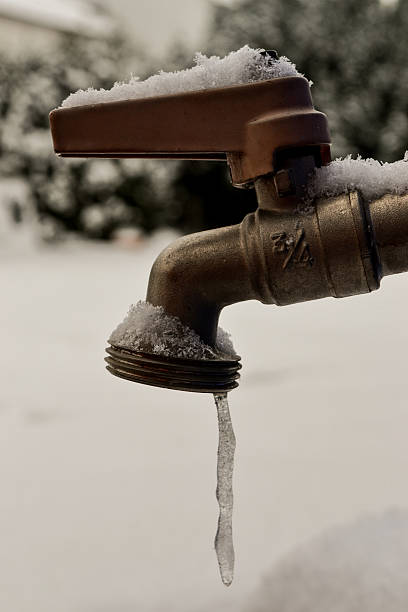Safeguarding Your Pipes from Freezing Issues: Critical Strategies
Safeguarding Your Pipes from Freezing Issues: Critical Strategies
Blog Article
Almost everyone maintains their personal opinion with regards to Prevent Frozen Pipes .

Winter can damage your pipes, especially by freezing pipes. Here's how to prevent it from occurring and what to do if it does.
Intro
As temperatures decline, the risk of frozen pipes boosts, possibly resulting in pricey repairs and water damage. Recognizing just how to avoid icy pipelines is essential for house owners in cool environments.
Avoidance Tips
Insulating susceptible pipes
Wrap pipelines in insulation sleeves or make use of warmth tape to shield them from freezing temperature levels. Concentrate on pipelines in unheated or outside locations of the home.
Heating techniques
Maintain interior rooms adequately heated, specifically locations with pipes. Open up cupboard doors to allow cozy air to flow around pipelines under sinks.
Just how to determine frozen pipes
Try to find reduced water flow from taps, unusual smells or noises from pipelines, and visible frost on exposed pipelines.
Long-Term Solutions
Structural modifications
Consider rerouting pipes far from exterior walls or unheated locations. Add additional insulation to attic rooms, basements, and crawl spaces.
Updating insulation
Buy top quality insulation for pipelines, attic rooms, and walls. Proper insulation assists keep regular temperature levels and reduces the danger of icy pipes.
Protecting Outside Pipes
Yard hose pipes and exterior taps
Disconnect and drain garden hose pipes before wintertime. Mount frost-proof faucets or cover exterior taps with insulated caps.
Understanding Frozen Pipes
What causes pipes to ice up?
Pipes freeze when exposed to temperatures below 32 ° F (0 ° C) for extended durations. As water inside the pipelines freezes, it broadens, putting pressure on the pipe wall surfaces and potentially triggering them to burst.
Dangers and damages
Frozen pipelines can result in water supply interruptions, residential property damage, and costly fixings. Burst pipes can flood homes and trigger extensive structural damage.
Indications of Frozen Piping
Recognizing frozen pipes early can prevent them from breaking.
What to Do If Your Pipelines Freeze
Immediate actions to take
If you suspect frozen pipes, keep taps open up to relieve stress as the ice thaws. Make use of a hairdryer or towels taken in hot water to thaw pipes gradually.
Verdict
Protecting against icy pipes requires proactive actions and fast actions. By recognizing the causes, signs, and safety nets, house owners can safeguard their plumbing throughout cold weather.
5 Ways to Prevent Frozen Pipes
Drain Outdoor Faucets and Disconnect Hoses
First, close the shut-off valve that controls the flow of water in the pipe to your outdoor faucet. Then, head outside to disconnect and drain your hose and open the outdoor faucet to allow the water to completely drain out of the line. Turn off the faucet when done. Finally, head back to the shut-off valve and drain the remaining water inside the pipe into a bucket or container. Additionally, if you have a home irrigation system, you should consider hiring an expert to clear the system of water each year.
Insulate Pipes
One of the best and most cost-effective methods for preventing frozen water pipes is to wrap your pipes with insulation. This is especially important for areas in your home that aren’t exposed to heat, such as an attic. We suggest using foam sleeves, which can typically be found at your local hardware store.
Keep Heat Running at 65
Your pipes are located inside your walls, and the temperature there is much colder than the rest of the house. To prevent your pipes from freezing, The Insurance Information Institute suggests that you keep your home heated to at least 65 degrees, even when traveling. You may want to invest in smart devices that can keep an eye on the temperature in your home while you’re away.
Leave Water Dripping
Moving water — even a small trickle — can prevent ice from forming inside your pipes. When freezing temps are imminent, start a drip of water from all faucets that serve exposed pipes. Leaving a few faucets running will also help relieve pressure inside the pipes and help prevent a rupture if the water inside freezes.
Open Cupboard Doors
Warm your kitchen and bathroom pipes by opening cupboards and vanities. You should also leave your interior doors ajar to help warm air circulate evenly throughout your home.

I have been very serious about 6 Ways to Prevent Frozen Pipes and I hope you liked the entire page. Enjoyed reading our piece? Please quickly share it. Help somebody else discover it. Thanks a lot for your time spent reading it.
Click Here Report this page